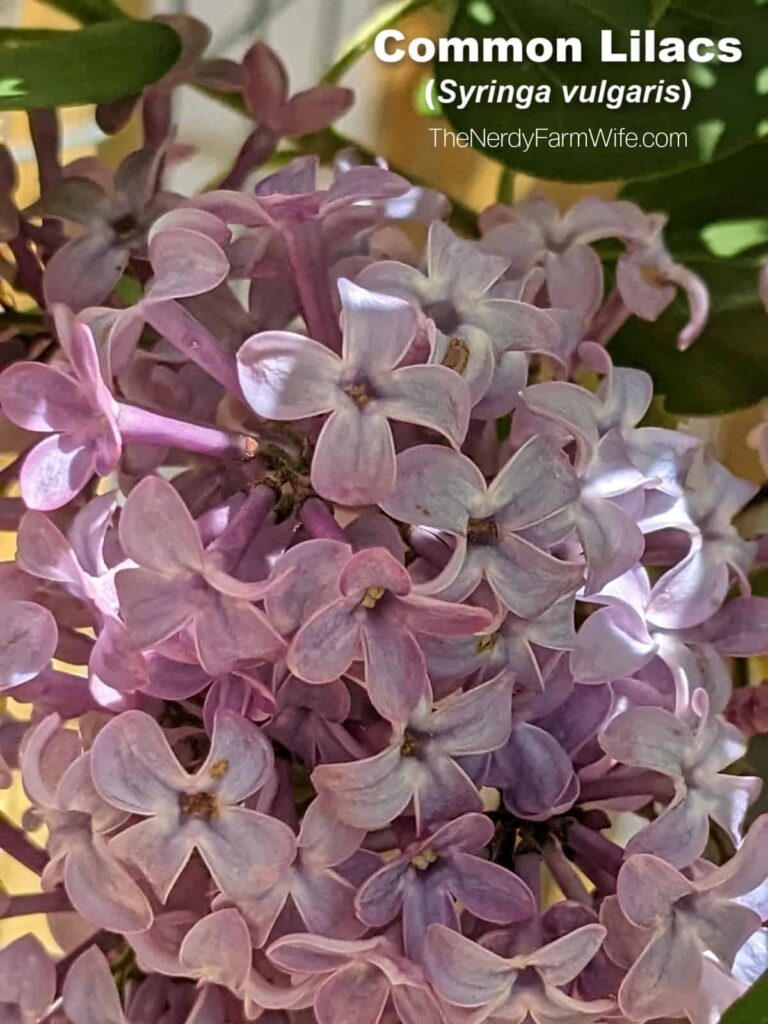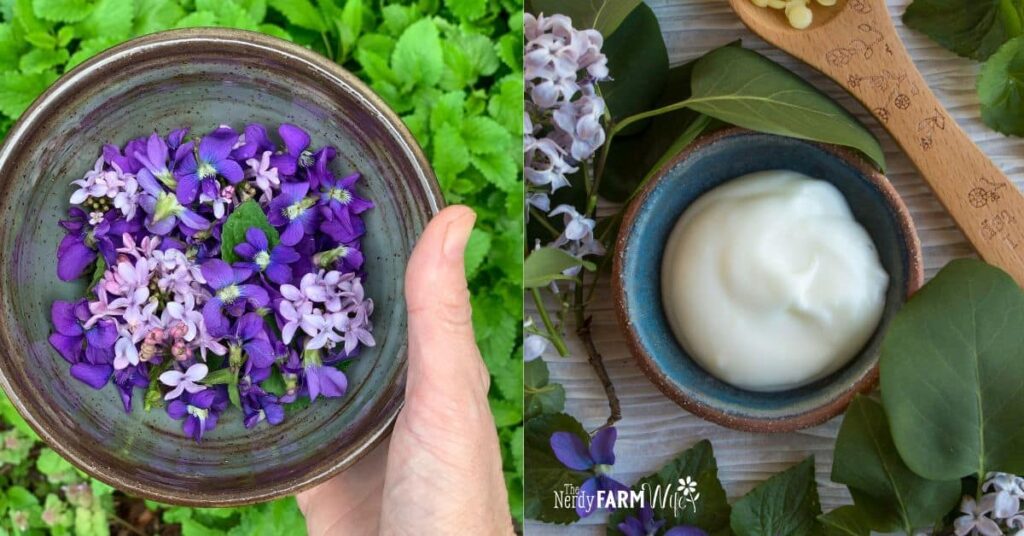Lilac & Violet Sore Throat Elixir
In this recipe, fresh lilac and violet flowers combine with honey and brandy to make a tasty herbal elixir for sore throats and mild coughs.

Why did I choose these two plants? Well, first of all, they’re two of my favorite springtime flowers and they look so pretty together!
But mainly, because they also have some solid scientific data and/or years of traditional use to back them up.

Common Lilacs (Syringa vulgaris) have traditionally been used world-wide for a variety of ailments such as: cold, cough, gout, rheumatism, skin wounds, and more. Modern scientific research supports “the traditional use of S. vulgaris … connected with its antioxidant, anti-inflammatory, antinociceptive (helps diminish pain) and antipyretic (prevents/reduces fever) properties.”

Violets (Viola sororia, V. odorata) are prized in herbalism for their cooling, soothing properties. They have an affinity for swollen lymph nodes and red inflamed conditions – which often occur when you have a sore throat and/or mild cold. Forage violets from your backyard – they can be purple, or purple and white; both types work great in this recipe!
Paired together, lilacs and violets make a great combo!

I’ve also used this favorite flower combination in the past to make a face cream that my mom loves:
Some of the beneficial compounds in lilacs don’t extract in water or alcohol, but instead via a fatty alcohol – vegetable glycerin. So that’s why you’ll see me add a drizzle of vegetable glycerin to this recipe. You should be able to find pure vegetable glycerin at local pharmacies or health food stores. If you can’t find any glycerin, you can leave it out – there’s still plenty of good stuff in the elixir without it!
Honey and brandy round out the other two ingredients commonly found in elixirs – the honey especially makes it taste good! :) You can use 80 or 100 proof vodka if you don’t have brandy available.

To Make Lilac & Violet Elixir:
- Fill a jar about 1/3 of the way with fresh lilac blooms, and another 1/3 of the way with fresh violet flowers.
- Drizzle a few lines of vegetable glycerin into the jar, if you have some on hand, to help better extract the compounds in lilac flowers.
- Stir to coat the flowers with glycerin.
- Pour honey into the jar until it’s not quite half filled. Stir gently.
- Next, pour brandy into the jar until it almost reaches the top.
- Stir well. If needed, top off with a little more brandy, so the jar is almost filled.
- Cover the jar with a lid, label, and tuck into a cabinet to infuse for 4 weeks, shaking every so often, or as you remember to.
- Strain and compost the spent flowers. Label and store the finished elixir out of direct sunlight and heat. Shelf life is 1+ year.
Take by the spoonful as needed for sore throats or tickly coughs!
References & Further Reading
Cech, Richo. Making Plant Medicine. Williams, OR: Horizon Herbs, 2000. Print.
Dudek, M.K., et al. Hydroxycinnamoyl derivatives and secoiridoid glycoside derivatives from Syringa vulgaris flowers and their effects on the pro-inflammatory responses of human neutrophils. Fitoterapia. Volume 121, September 2017, Pages 194-205.
Woźniak, Marta, et al. Effects of Phytochemically Characterized Extracts From Syringa vulgaris and Isolated Secoiridoids on Mediators of Inflammation in a Human Neutrophil Model. Frontiers in Pharmacology. 2018; 9: 349. Published online 2018 Apr 11.


